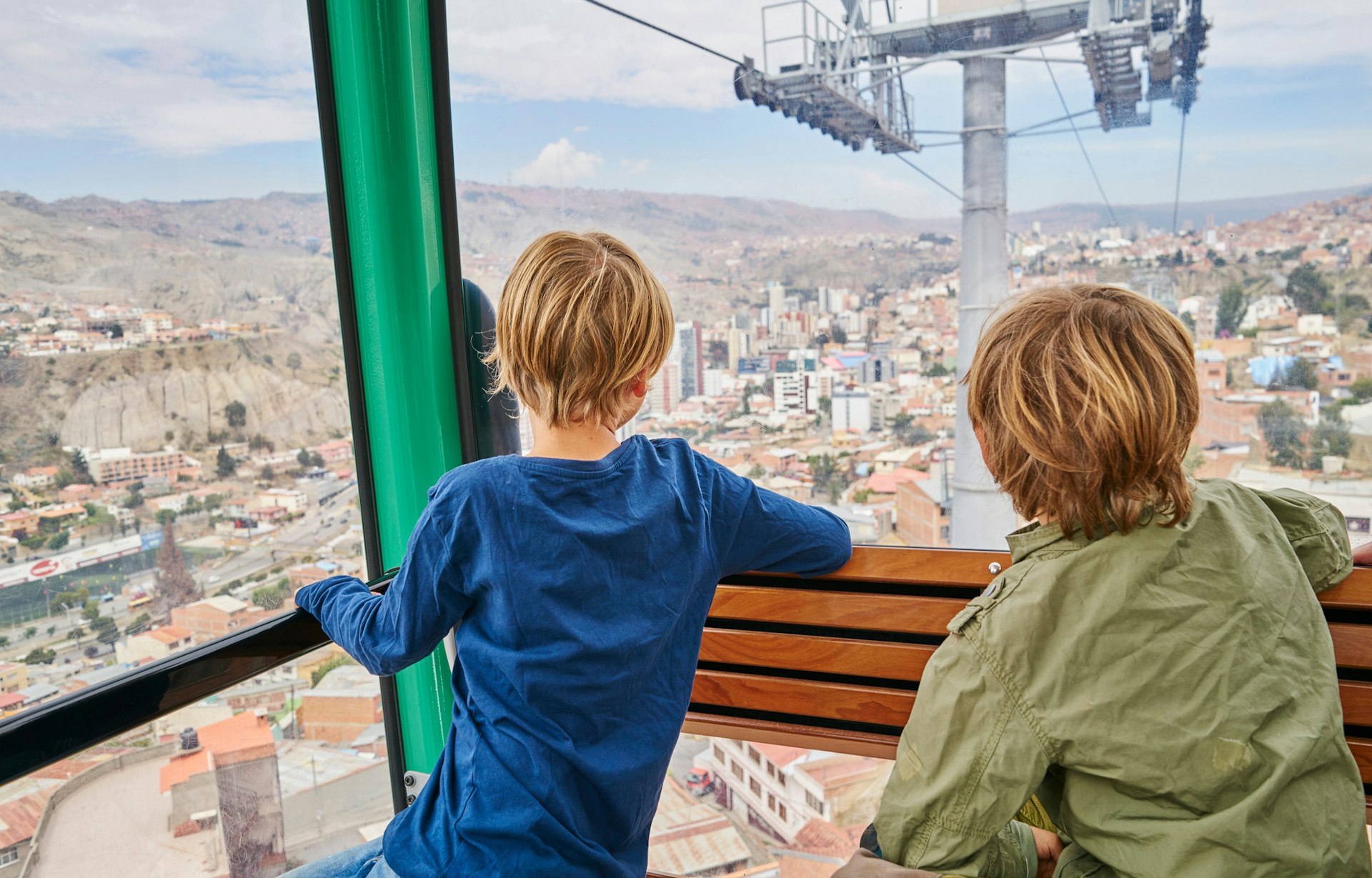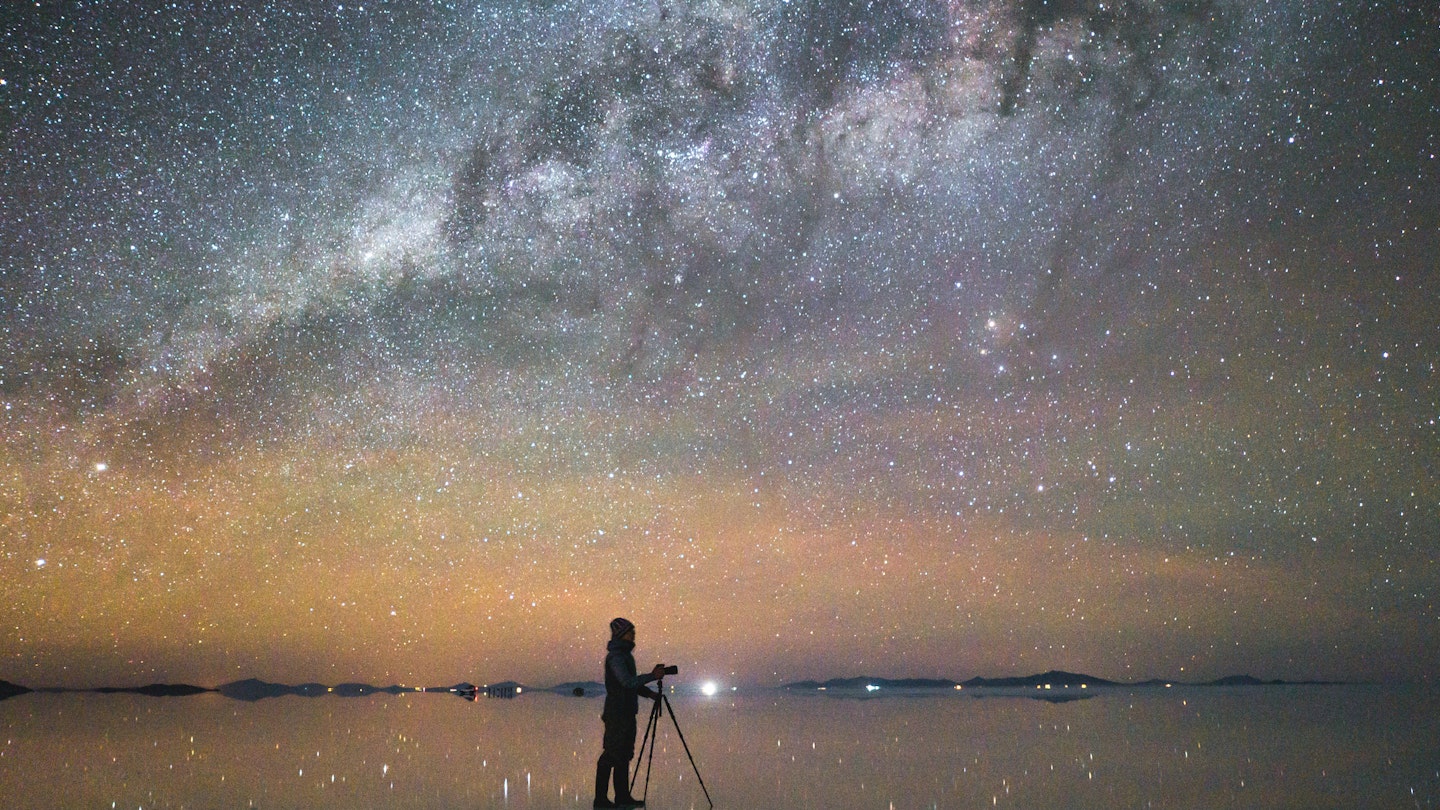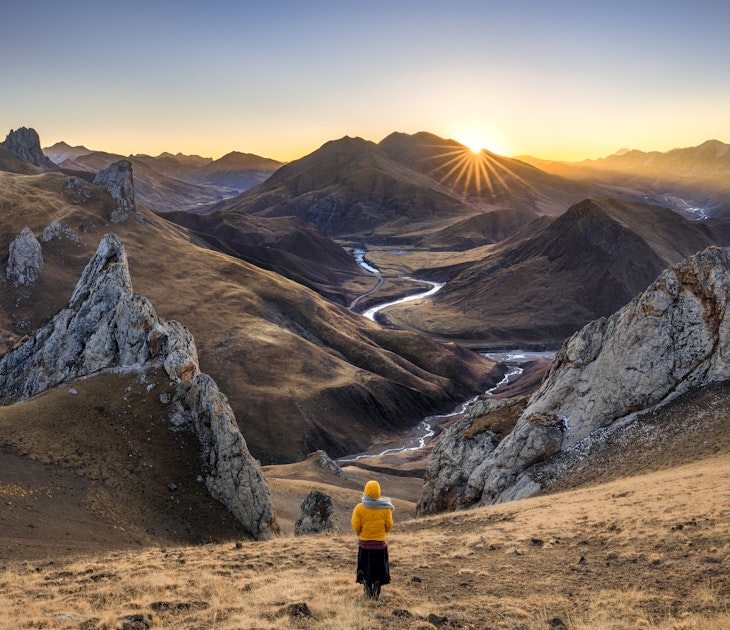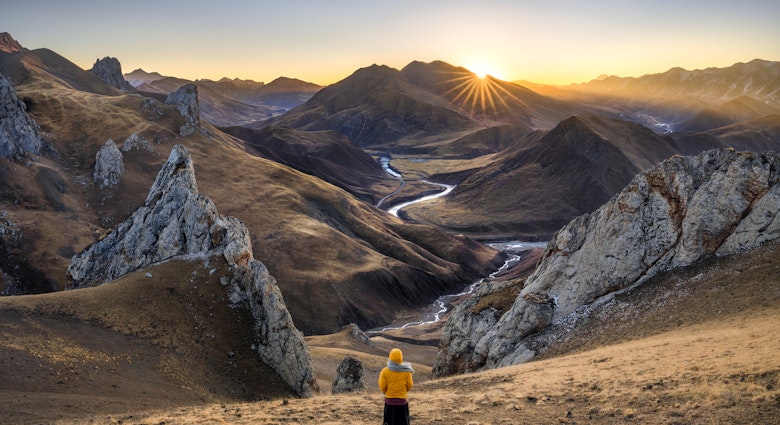From Amazon jungle to the world's largest salt flats by way of soaring Andean peaks, Bolivia rewards travelers with a giddying variety of landscapes.
Better still, this quiet corner of South America doesn't see half as many visitors as neighboring Argentina, Brazil, and Chile, so you can admire the views without a crush.
This general lack of crowds means you'll have no problems lining up essential Bolivian experiences. Try the hair-raising bike ride down the so-called Death Road between La Paz and Los Yungas or take a drink from the fabled Fountain of Youth at Lake Titicaca.
Authentic, adventurous, and largely unscarred by mass tourism, Bolivia is one of South America's best-kept secrets. Start planning your trip there right now with our nine favorite places to visit in Bolivia.
1. The Salar de Uyuni salt flats
Best for a once-in-a-lifetime experience
Undoubtedly the pick of Bolivia's tourist sights, the endless, dazzling-white Salar de Uyuni (salt flats of Uyuni) were formed by the disappearance of an inland ocean that once covered most of the Altiplano.
As the waters evaporated, they left behind the world’s largest salt flats – usually visited on three-day 4WD tours from the town of Uyuni, with side stops at the deserts, geysers, hot springs, and colorful lakes in the surrounding area.
It's an otherworldly landscape at any time of year, but visit during the rainy season (December to February) and a thin layer of water floats above the salt flats, creating a mirror that perfectly reflects the sky.
Planning tip: Make sure you acclimatize to the altitude before crossing the flats to avoid getting sick – spend a few days adjusting in La Paz before leaving for Uyuni.

2. La Paz
Best place for cultural encounters
Built into a natural hollow framed by the Cordillera Real mountains, La Paz stands at a dizzying 3600m (11,811ft) above sea level, so don't overdo things in the first couple of days.
At first look, this majestic city can – quite literally – take your breath away. La Paz is a bustling and dynamic metropolis where indigenous traditions coexist with the modernity of a big city, making for an unmissable stop.
The lively center combines colonial architecture with colorful modern buildings from Bolivia's post-independence period. In amongst it all are art museums, a growing gastronomic scene and plenty of vibrant nightlife.
A new cable car system offers wonderful bird’s eye views of the city, and you can dip into the Mercado de las Brujas (Witches Market) to learn about the mysticism of Aymara culture.
Within easy striking distance of La Paz are a number of rewarding natural attractions, including the cactus-filled Valle de Luna – perfect if you want to take a quick break from the busy streets.
3 Madidi National Park
Best place for wildlife sightseeing
One of the world's most biologically diverse ecosystems, Madidi National Park forms part of the Bolivian Amazon, one of South America's best-preserved areas of virgin rainforest.
This protected section of the Amazon is only accessible via a three-day boat ride from Rurrenabaque, so getting here is part of the fun.
As well as getting a feel for the sounds and sensations of the rainforest inside this almost 19,000-sq-km (7336-sq-mile) reserve, you can meet pink dolphins, try your hand at piranha fishing and visit Indigenous communities on innovative and community-focused eco-tourism projects.
Planning tip: Tours to Madidi are all-inclusive and mostly at the budget end of the spectrum – they're a moving introduction to the Amazon world.
4. Sucre
Best place for historic architecture
Taking its name from revolutionary leader, Antonio José de Sucre – who later became the second president of independent Bolivia – the nation's capital is a stunner.
It's a city of well-preserved colonial architecture and Republican-style buildings that well fits the translation of its Spanish name, thanks to an impeccable collection of sugar-white houses, basilicas and civic buildings that sparkle in the South American sunshine.
As the city where the Bolivian republic was founded, Sucre has plenty for history buffs to enjoy. Highlights include the Casa de la Libertad (House of Freedom), where the declaration of independence was signed in 1825.
Also swing by the Cementerio Municipal, with its ornate mausoleums and magnificent gardens, and the Recoleta neighborhood, for fine views across the roofs and bell towers of the capital. With its comfortable weather, tasty food and rich historical heritage, Sucre is an essential stop on any Bolivia itinerary.

5. Potosí
Best place for history
In colonial times, the silver mines of Potosí turned this dizzyingly high outpost into one of the largest and most influential cities in the Americas, with its riches flowing back to the Spanish Empire.
Mining still goes on inside Cerro Rico mountain – known locally as "Rich Hill" – and visitors can join tours to explore the dark and narrow tunnels and meet the miners who earn a living in this harsh environment. Needless to say, it's not a trip for claustrophobics.
In the city itself, the main attraction is Casa Nacional de la Moneda, a monumental 18th-century construction where locally mined silver was once transformed into coins – known as potosís – during Potosí's heyday.
Due to falling returns from the mines, the city has fallen on hard times, but its well-preserved architecture still stands as testimony to its affluent past.
6. The Jesuit Mission Circuit
Best for surprising religious architecture
The historic La Chiquitania region is composed of several small, centuries-old Jesuit Mission towns that sit amongst beautiful landscapes and abundant natural attractions.
On a multiday tour, you’ll get the chance to visit ancient churches that were built between 1691 and 1760 and remain largely unchanged to this day, in towns such as Concepción, famed for the remarkable, low-eaved Catedral de Concepción.
Expeditions begin in San Javier, four hours from Santa Cruz, and continue to San Ignacio, which is used as a base to explore the wider area. With plenty of viewpoints overlooking the dry forests of La Chiquitania and numerous short trails to hike, as well as thermal rivers and impressive rock formations to explore, La Chiquitania shows a very different side to Bolivia.
Planning tip: This area also hosts the respected International Baroque Music Festival across April and May every second year.

7. Biking along the Death Road
Best for an adrenaline-charged adventure
Once regarded as one of the most dangerous roads in the world, the so-called Death Road connecting La Paz with the valley of Los Yungas is now closed to motor traffic. However, it's still accessible by bicycle, on one of South America's most fun-filled off-road rides.
With descents of more than 3000m (9842ft), the gravel route is a thrilling mountainside adventure that begins on the snow-covered high plains of La Cumbre (the summit of the Cordillera Real) and ends in a tropical valley where you can finally pause and catch your breath.
Passing some magnificent subtropical scenery, including plunging waterfalls, sheer cliffs and narrow, nerve-wracking corners, this cycle trip is only for the most audacious of riders.
Planning tip: For about 350 bolivianos (approximately US$50), tour operators will provide mountain bikes and transfers, as well as the necessary backup equipment for the one-day ride.
8. Isla del Sol, Lake Titicaca
Best place to disconnect from the outside world
According to legend, the Isla del Sol on Lake Titicaca was the birthplace of Inca culture. Located on the highest navigable lake in the world, this historic and sacred site showcases Boliva’s remarkable indigenous heritage like nowhere else.
On the island itself are Inca ruins, a museum containing sacred relics, and the Fuente del Inca (Fountain of Youth), a natural stream that locals believe has the power to grant health and eternal youth. You can also hike along a four-hour trail for impressive views over the expansive waters of Lake Titicaca.
Planning tip: Boats run between Isla del Sol and Copacabana pier on the lakeshore just twice a day; if you need to stop over, island accommodations are mostly very basic. There are no ATMs and it’s hard to get Wi-Fi, so be ready for a rustic experience.
9. Samaipata
Best place to chill out
A charming village located three hours away from Santa Cruz, Samaipata has a perfect year-round climate and a relaxing atmosphere where time seems to slow down and the noise of the crowds fades to a whisper. It's ideal for taking a soul-restoring break in the hills.
Nearby are numerous natural attractions including the scenic Las Cuevas waterfalls that are usually empty on weekdays for a refreshing alfresco swim. If you enjoy hiking trails, point your compass at the giant fern forest in nearby Amboró National Park.
The other big attraction in Samaipata is El Fuerte. A sacred rock carved with seats, conduits, and niches for idols, it's located on top of a hill surrounded by the ruins of an ancient ceremonial center for the Chané and Inca people.
Samaipata also has a burgeoning wine industry – a surprising discovery in this off-the-beaten-track location. Several local cellars are open to visitors, and you can taste their wares with a wonderful view of the vineyards that produced the wine in your glass.












